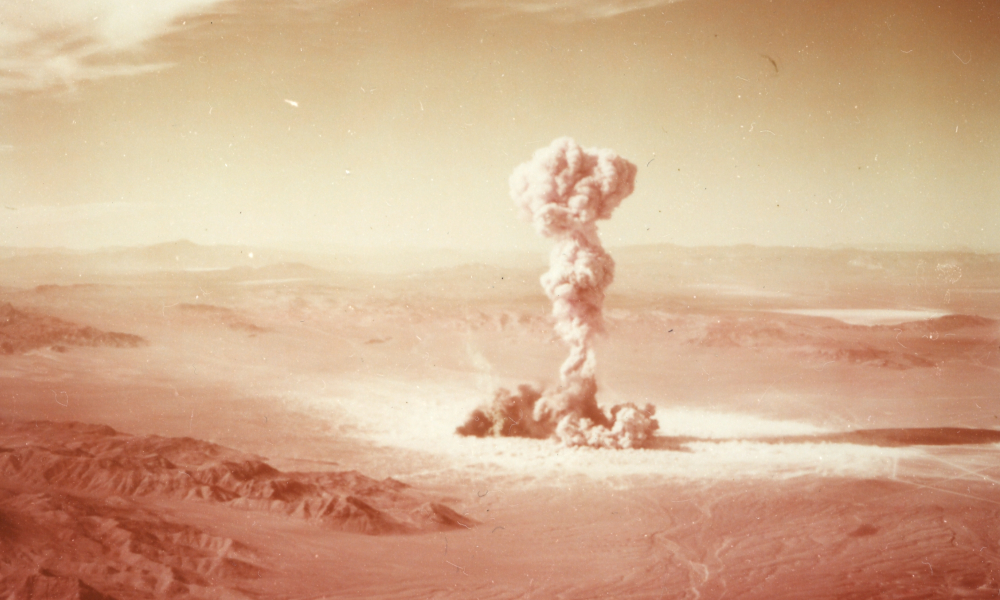Another Iranian Missile Test(s): Explained
On Wednesday, U.S. National Security Advisor Michael T. Flynn condemned a recent Iranian missile launch and, perhaps more significantly, put “Iran on notice.” Flynn asserted:
Published by The Lawfare Institute
in Cooperation With

On Wednesday, U.S. National Security Advisor Michael T. Flynn condemned a recent Iranian missile launch and, perhaps more significantly, put “Iran on notice.” Flynn asserted:
The . . . ballistic missile launch is . . . in defiance of UN Security Council Resolution 2231, which calls upon Iran "not to undertake any activity related to ballistic missiles designed to be capable of delivering nuclear weapons, including launches using such ballistic missile technology."
Flynn also stated:
President Trump has severely criticized the various agreements reached between Iran and the Obama Administration, as well as the United Nations—as being weak and ineffective.
Instead of being thankful to the United States for these agreements, Iran is now feeling emboldened.
As of today, we are officially putting Iran on notice.
The National Security Advisor put the launch in the context of other Iranian “incidents” that have allegedly threatened U.S. interests or “violat[ed] international norms”—all of which, according to Flynn, amount to “destabilizing behavior across the Middle East.”
Yesterday, in response to whether the administration was considering employing a military option against Iran for conducting the launch, President Trump announced that “nothing is off the table.” And today, the administration levied sanctions on 25 Iranian individuals and organizations, most notably the Islamic Revolutionary Guards Corps, for their “involve[ment] in procuring technology and/or materials to support Iran’s ballistic missile program.” The U.S. government asserted that the new sanctions comport with the international nuclear deal with Iran, known as the Joint Comprehensive Plan of Action or JCPOA, under which the United States may continue to penalize entities and persons involved in certain ballistic missile activities.
Relatedly, there appears to be bipartisan support in Congress for additional sanctions against Iran. (See the statement of U.S. Senate Foreign Relations Committee Chairman Bob Corker, Ranking Member Ben Cardin, and eighteen other senators, here.)
For its part, Iran confirmed the launch, which occurred two days after the release of President Trump’s controversial immigration order—a directive that restricts immigration from seven Muslim-majority nations, including Iran. However, Iranian Defense Minister Brigadier General Hossein Dehghan insisted that the test did not violate the JCPOA, or other international agreements. He also appeared to reject the notion that Iran tested the missile in response to Trump’s executive order. Instead, Dehghan alleged that the launch was “in line with [Iranian] plans.” He further stated that the missile in question was for defensive purposes only, and that the weapon is “not designed for the capability of carrying a nuclear warhead.”
Launch Details
Iran conducted the ballistic missile test on Sunday, January 29. According to Reuters, the missile detonated after traveling 1,010 km from Semnan, a site approximately 210km east of Tehran.
The Los Angeles Times reported that the “missile was tracked flying southward . . . before exploding when its reentry vehicle failed.” Iran had allegedly tested the same weapon in July 2016.
Some, notably arms control expert Jeffrey Lewis, believe that the missile was a BM-25 Musudan, originally a North Korean weapon system. The Musudan has a payload capability of 500-1,200 kg and a maximum range of 2,500-4,000 km. According to Popular Mechanics, “[t]he range of the missile is open to some debate because [the missile] hasn’t been successfully tested.” Further, it appears that the weapon is nuclear-capable because its Soviet predecessor, a submarine-launched ballistic missile, was expressly designed for the delivery of nuclear warheads. And a bipartisan group of U.S. senators alleged the missile in question was “capable of delivering a nuclear weapon.”
Significantly, Reuters further reported that Iran might have also tested a cruise missile in addition to the Musudan during the January 29 test. The cruise missile, allegedly an Iranian Soumar weapon system derived from the Soviet Kh-55, “is believed to be capable of carrying nuclear weapons and may have a range of 2,000 to 3,000 km.” The Trump administration has not yet commented on whether Iran tested a nuclear-capable cruise missile in conjunction with its testing of a ballistic missile on Sunday.
President Trump and the JCPOA
Although Tehran has tested missiles since the adoption of the JCPOA in July 2015 (five times, according to Popular Mechanics), the launch was the first of its kind since the inauguration of President Trump. While on the campaign trail, Mr. Trump was highly critical of the JCPOA, calling it “the stupidest deal of all time.” In September 2015, he promised to “renegotiate [the JCPOA] with Iran.”
Mr. Trump, however, appears to no longer hold that view. Later in the campaign, he vowed to strictly enforce the JCPOA rather than abrogate the agreement. Indeed, on Sunday, the same day as Iran’s missile test, President Trump and King Salman of Saudi Arabia “agreed on the importance of rigorously enforcing the [nuclear deal] with Iran . . .”
In any event, Lt. Gen. (ret.) Flynn’s statement did not touch on these broader issues and focused on the missile test, accusing Iran of acting in “defiance of U.N. Security Council Resolution 2231.” Resolution 2231 endorsed and implemented the JCPOA. The full text of the agreement was annexed to the resolution alongside a P5+1+EU “Statement” about the agreement (Annex B to the resolution; see John Bellinger’s discussion of the resolution’s structure and “bindingness,” here ). The resolution terminated all previous resolutions concerning Iran’s nuclear program.
Did the Iranian Test(s) Violate Resolution 2231?
Neither the resolution nor the documents contained in its annexes prohibit ballistic missile testing. According to Robert Einhorn, this was a compromise agreed to over the course of the negotiations that led to the deal. The text of Resolution 2231 itself does not address ballistic missile testing. The issue is only mentioned in paragraph 3 of the Statement in annex B, which states that “Iran is called upon not to undertake any activity related to ballistic missiles designed to be capable of delivering nuclear weapons.”
This exhortative formulation marked a significant change compared to the language used in previous Security Council resolutions on missile testing. UNSCR 2231’s immediate predecessor, UNSCR 1929 (2010) “decides that Iran shall not undertake any activity related to ballistic missiles capable of delivering nuclear weapons” (op. para. 9). In other words, under UNSCR 1929, Iran was legally required to forbear from the development, testing, and deployment of nuclear-capable ballistic missiles.
Furthermore, the language on missile testing in the JCPOA, memorialized in UNSCR 2231, seems to relax the substantive requirements pronounced in UNSCR 1929. The current text concerns “missiles designed to be capable of delivering nuclear weapons,” arguably a less stringent limitation than the one imposed in UNSCR 1929, “missiles capable of delivering nuclear weapons.” In other words, while UNSCR 1929’s prohibition on missile-related activity encompassed missile systems that were not intended to carry a nuclear payload but could technically be used for such purposes, the current language seems to require intent.
Importantly, neither UNSCR 1929 nor 2231 (including its annexes) make any mention of cruise missile testing. (See here for an analysis of UNSCR 2231’s restrictions of Iran’s ballistic missile capabilities in The Washington Post, and see here for a similar discussion in Foreign Policy).
It therefore appears that although the launch is clearly “in defiance” of the spirit of the JCPOA and UNSCR 2231, it is not an outright violation of either. Nevertheless, President Trump has imposed fresh sanctions against Iran, and it seems likely that Congress will consider additional measures to dissuade Tehran from further missile testing.





